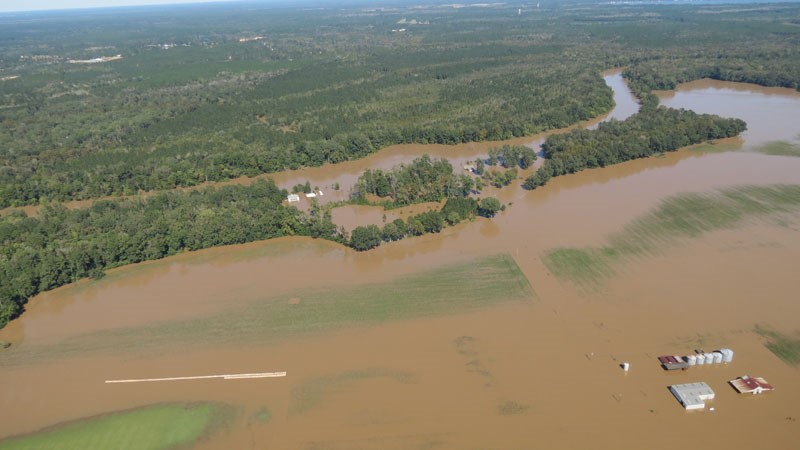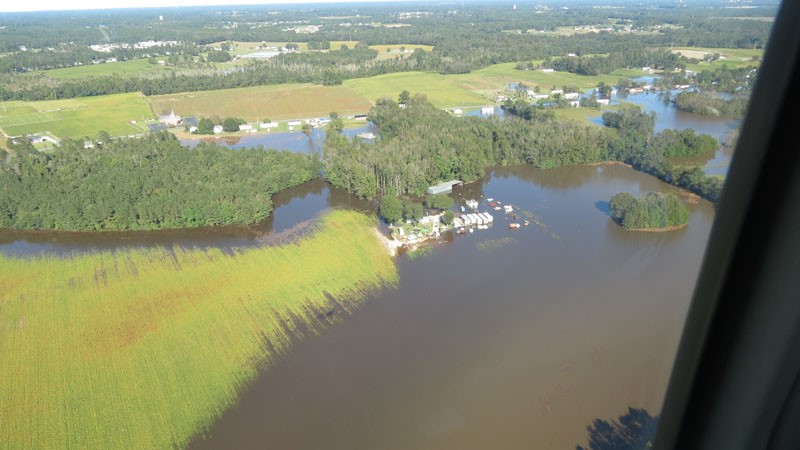Rhonda Garrison (Southern Farm Network, Raleigh, NC) reports significant flooding of agricultural crops and livestock in the Carolinas from Hurricane Matthew, but damage reports are just now starting to come in. Flood waters have not only prevented access to fields and other locations, they’ve prevented the continuation of harvest. Some crops in the field before the hurricane including cotton, peanuts, soybeans and sweet potatoes may be harvestable, but others will not, she added. “Some crops may be deemed adulterated by flood waters and unsuitable for the human food chain, including feeding to food animals. They’re just going to have to come out of the field and be tested before we know,” she said. “Cotton losses east of Interstate 95 are upwards of 50 percent. For many producers, this is the second year in a row of crop losses due to excessive rains and flooding,” she said. “Unlike Hurricane Floyd in 1999, no hog lagoons were breached, therefore no hog waste ran into rivers that ultimately lead to the Atlantic. Hog loss numbers have been few, and poultry numbers are slow to come in. The last number I heard was 6 million birds, counting a combination of broilers and turkeys. While that’s a big number, it’s a very small percentage of the poultry in North Carolina. We’ve only had one day of spotty showers since the hurricane on October 8. So, we’ve had good harvest weather for the last 3 weeks, but in many cases, the fields are still just too wet.”
This South Carolina photo shows the Little Pee Dee River running across the top. Flooded grain silos and a poultry farm are in the lower right corner.

This photo from eastern North Carolina shows a flooded poultry operation.

